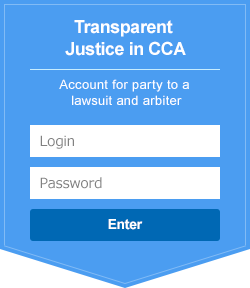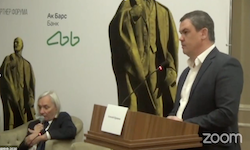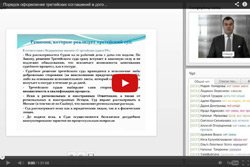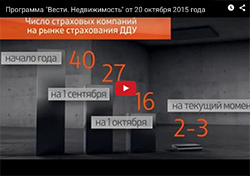Here you can submit your claim and supporting documents online.
– Public affairs and media office
– Human resources department
ADVANTAGES OF OUR ARBITRATION
Fast processing of claims
A claim is processed on the 10th working day from the date of its filing. By law, the decision of the Arbitration Court comes into legal effect immediately and is not subject to appeal (anywhere else).State support in the enforcement of decisions
The state enforcement order is issued for the Court decisions in 30-50 days (against financial guarantees of the Court).Real debt collection
The court provides free-of-charge assistance in processing and filing executive documents to the debtor's bank or the bailiff service, with further monitoring of their execution until the return of debts. Organizing the work of collectors.Qualified and independent judges
Requirements to the judges - higher legal education and 5 years of work experience in a particular industry.
A judge is chosen by the parties of the Presidium, ensuring the independence of the process. Personal data of judges is completely closed.Assistance in preparation for court
Prior to filing a lawsuit the court provides free advice on procedural matters.Regional availability
The Court reviews the claims to regional and foreign Defendants in Moscow or via Skype.Financial cost-effectiveness
A single court deals with claims both to legal entities and natural persons. 10 times lower expenses than with a state court.- Official Arbitration Court for the Government of Moscow and Moscow region, members of Moscow Office of "Delovaya Rossya", the Association of Regional Banks of Russia, the Association of Moscow Investors, the Leasing Union, the Builders Association of Russia, the Association "Oboronstroy", 19 guilds, 38 SRO (self-regulating organizations of the construction complex.
Submitting a claim
Article 102. Form and Contents of the Statement of Claim
1. The statement of claim shall be submitted to the AI in writing. The statement of claim shall be signed by the claimant or its representative. The statement of claim may also be submitted to the AI via the Electronic Reception at the AI's official web site rsa.sg in the internet.
2. The statement of claim shall specify:
1) the date of the statement of claim and name of the AI where the statement of claim is submitted to;
2) name of the claimant and its location; if the claimant is an individual, its residence, date and place of birth, its job location or date and place of its state registration as a private entrepreneur, phones, faxes and emails of the claimant;
3) name of the respondent and its registration and/or residential location; if the respondent is an individual, its date and place of birth, its job location (date and place of its state registration as a private entrepreneur), phones, faxes and emails of the claimant, and other contact details thereof;
4) substantiation of the AI's competence to try the claim.
5) the claimant's claims against the respondent citing laws and other regulations, and where the claim is against several respondents, claims against each one of them;
6) circumstances underlying the claims and evidence supporting them;
7) claim amount;
8) calculation of the collectible claim amount;
9) information on the claimant's compliance with the complaint or other pretrial procedure if it is provided for by the law or the contract;
10) information on actions taken by the AI or the court to secure pecuniary interests prior to submission of the claim statement;
11) list of attached documents.
The claim statement must also include other details if they are required for due and punctual trial of the case, and include motions including motions to request evidence from the respondent or other persons.
3. The claimant may independently forward, to other parties to the case, copies of its claim statement and documents attached to it that they lack by registered mail with the inventory of attachments and notification of service or in person against receipt. In the above case, the claimant shall independently bear the risk of the court's denial to issue the writ of execution on the grounds of undue notification of the respondent. Such denials shall be deemed occurring through no fault of the AI or the Arbitration Tribunal.
Article 103. Documents attached to the Claim Statement
1. Attached to the claim statement shall be:
1) copy (copies) of the claim statement and documents attached thereto for forwarding thereof by the AI to the respondent (respondents);
2) In case of independent notification, the service notification or other documents confirming delivery or attempted delivery, to other parties to the case, copies of the claim statement and documents attached thereto that the other parties to the case lack;
3) the document confirming payment of the arbitration fee under the preset procedure and in the preset amount, or motion to postpone, proportionate, decrease, increase the arbitration fee amount or set forth the special procedure for payment thereof;
4) the arbitration agreement or the document with the arbitration clause;
5) the documents confirming the circumstances underlying the claimant's claims;
6) copies of the certificate of state registration of the company;
7) the power of attorney or other documents acknowledging the authority to execute the claim statement;
8) copies of the court documents on security of pecuniary interests prior to submission of the claim (where applicable);
9) documents confirming the claimant's compliance with the complaint or other pretrial procedure if it is provided for by the law or the contract;
10) the draft agreement where the cause of action is inducement to execute the agreement (where applicable);
2. Documents attached to the claim statements may be submitted to the AI in electronic form via the Electronic Reception at the AI's official internet site.
Article 104. Acceptance of the Claim Statement and Initiation of the Case Trial
1. The AI President or another authorized person shall resolve the matter of accepting the claim statement to trial within one business day of the date of arrival of the claim statement to the Arbitration Tribunal and appoint the Arbitrator to try it.
2. The AI must accept the claim statement submitted to it in compliance with requirements hereof to the form and contents of the claim statement.
3. The Arbitration Tribunal President shall render its ruling on accepting the claim statement and appointing the Arbitrator to try it, which starts the case trial.
4. The Arbitrator appointed to resolve the dispute shall accept the claim statement to its trial not later than the day following the day of arrival of the claim statement to the Arbitration Tribunal, of which the ruling is rendered. The AI President may render such ruling in lieu of the Arbitrator.
5. Such ruling shall specify the appointment of the date, time and place of the arbitration trial, actions to be performed by the parties to the case, performance deadlines thereof, as well as the address of the AI's official internet site, and the AI's phones and faxes using which the parties to the case may obtain the information on the case at hand, familiarize themselves herewith and other documents of the Arbitration Tribunal as well as obtain their ID numbers to access their Personal Accounts with the Transparent Justice system; specify the parties' entitlement to apply, at any stage of the arbitration trial, to the intermediary including the mediator for assistance for the purposes of resolving the dispute under the procedure set forth by the law and consequences of such actions, and to execute the amicable settlement agreement by and between the parties.
6. Copies of the AI President's ruling on acceptance of the claim statement to the AI trial and appointment of the Arbitrator, as well as the ruling of the appointed Arbitrator to its trial shall be forwarded to the parties to the case not later than the day following the day of enactment thereof.
Article 105. Claim Statements Set Aside
1. The AI President or the Arbitration Tribunal, having identified, when resolving the matter of acceptance of the claim statement to the trial, that it has been submitted in breach of the requirements set forth herein may accept it or render its ruling to set the claim statement aside.
2. In its order, the AI or the Arbitration shall set forth its grounds for setting the claim statement aside and the period within which the claimant must remove the circumstances underlying setting the claim statement aside.
The copy of the ruling setting aside the claim statement shall be forwarded to the claimant not later than the day following its rendering.
3. Where the circumstances underlying setting aside the claim statement are removed within the period set forth in the Arbitration Tribunal's or the AI's ruling, the claim statement shall be deemed submitted on the day of its re-arrival to the AI and shall be accepted by the AI to the trial.
4. Where the circumstances set forth in part 2 of this article are not eliminated within the period set forth in the ruling, the Arbitration Tribunal and the AI shall return the claim statement and the documents attached thereto under the procedure set forth in article 100 hereof.
Article 106. Claim Statement Return
1. The Arbitration Tribunal shall return the claim statement if it, when resolving the matter of accepting the claim statement, identifies that:
1) the case is beyond the AI's jurisdiction;
2) prior to rendering the ruling accepting the claim statement to the trial by the Arbitration Tribunal, the claimant's motion has arrived to return the claim statement;
3) no circumstances have been removed that underlie setting aside the claim statement within the period set forth in the Arbitration Tribunal's or the AI's ruling.
The Arbitration Tribunal and AI shall also return the claim statement if the motion to postpone, proportionate, decrease or increase the arbitration fee amount is denied.
2. The Arbitration Tribunal or the AI shall render its ruling to return the claim statement.
3. The copy of the ruling to return the claim statement shall be forwarded to the claimant not later than the day following the day of rendering such ruling or expiry of the period set forth by the Arbitration Tribunal or the AI for removal of the circumstances underlying setting aside of the claim statement with the claim statement and documents attached thereto.
4. Return of the claim statement shall not preclude re-applying with the same claim to the AI under the general procedure upon elimination of the circumstances underlying such return thereof.
Article 107. Joining and Disjoining Several Claims
1. The claimant may combine, in one claim statement, several claims interconnected by causes of action and evidence provided.
2. The Arbitration Tribunal may combine several homogenous cases with the same parties into one case for joint trial.
2.1. The Arbitration Tribunal, having identified that is trying several cases interconnected with the causes of action and/or the evidence provided as well as otherwise where the risk arises that conflicting court enactments are adopted, shall, on its own initiative or on motion of the party to the case, combine such cases into the single one for joint trial thereof.
3. The Arbitration Tribunal may extract one or several combined claim into a separate trial if it deems separate trial of the claims compliant with the objectives of efficient arbitration trial.
4. The unification of cases into the single trial and extraction of claims into the separate trial shall be permissible before the court enactment or the arbitration award completing the case trial by the Arbitration Tribunal.
5. The Arbitration Tribunal shall render its ruling granting or denying combination of cases into the single trial or extracting claims into the separate trial. Copies of the above ruling shall be forwarded to the parties to the case.
6. Cases being tried by the Arbitration Tribunal shall, where they are united into the single trial, shall be transferred to the Arbitrator who accepted the claim statement to the Arbitration Tribunal's trial the earliest of all other Arbitrators.
7. After combining cases into the single trial or extracting claims into the separate trial, the case shall be tried ab initio.
8. Where the AI or the Arbitration Tribunal, when trying the case, identifies that the court is trying the case claims whereunder are interconnected in terms of causes of action and/or evidence with claims asserted in its case at hand, and there is a risk of rendering conflicting arbitration enactments, the Arbitration Tribunal or the AI President may suspend the case trial.
Article 108. Response to the Claim Statement
1. The Respondent must submit and present, to the Arbitration Tribunal and parties to the case, its response to the claim statement setting forth its objections against claims against it for each argument included into the claim statement.
2. In cases and under the procedure set forth herein, other parties to the arbitration may forward, to the Arbitration Tribunal and other parties to the case, their written responses to the claim statement.
3. The response to the claim statement shall be forwarded to the Arbitration Tribunal and parties to the case in person or by registered mail with inventory of attachments and service notice within 2 business days in advance of the arbitration session start. The Arbitration Tribunal may, in its ruling accepting the claim statement to the Arbitration Tribunal's trial, set forth the necessity and period of forwarding the response by the parties to the case.
The response may also be submitted to the Arbitration Tribunal via the Electronic Reception at the AI's official internet site rsa.sg.
4. Where the respondent, within the period set forth herein or by the Arbitration Tribunal, provides no response to the claim statement, the Arbitration Tribunal may try the case on evidence included into the case file or, where it is impossible to try the case without the response, may set forth a new deadline for presentation thereof. In this case, the Arbitration Tribunal may assess the arbitration expenses to the respondent regardless of outcome of the case trial.
5. The Response to the Claim Statement shall set forth:
1) the claimant's name, location or, where the claimant is an individual, its residence;
2) name of the respondent and its location; or, if the claimant is an individual, its residence, date and place of birth, its job location or date and place of its state registration as a private entrepreneur;
3) objections against each argument in connection with the merits of the claims alleged citing laws and other regulations as well as evidence underlying such objections;
4) the list of documents attached to the response.
6. The response must specify phones, faxes, emails and other details required for due and punctual trial of the case.
7. Attached to the response to the claim statement shall be documents confirming the arguments and/or objections against the claim as well as documents that confirm forwarding of the response copies and documents attached thereto to the claimant and other parties to the case.
8. The response to the claim statement shall be signed by the respondent or its representative. Attached to the response signed by the representative shall be its power of attorney or other signing authority document.
9. The Arbitration Tribunal may deem the respondent's failure to submit objections against the claim the recognition of the claimant's claims provided that the Arbitration Tribunal possesses evidence of the respondent's receipt of the claim.
Article 109. Counterclaim
1. The respondent, prior to the Arbitration Tribunal's issuance of its arbitration award completing the trial of the case on its merits, may counterclaim against the claimant at the AI, and such counterclaim shall be tried concurrently with the original claim.
2. Counterclaims shall be submitted under the general claim submission rules.
3. The AI shall accept the counterclaim where:
1) the counterclaim is designed to be offset against the original claim;
2) granting the counterclaim excludes, completely or partially, granting the original claim;
3) there is an interconnection between the original claim and the counterclaim and joint trial thereof would result into faster and due trial of the case.
4) submission and trial of the counterclaim is provided for in the arbitration agreement and the terms and conditions of the latter apply to the former.
4. The Arbitration Tribunal shall return the counterclaim if there are no conditions provided for in part 3 of this article.
5. The Arbitration Tribunal, having identified that it is trying several cases claims wherein comply with terms and conditions of the original claim and the counterclaim, shall unite, on its own initiative or on motion of the party to the case, such cases into one for joint trial thereof.
6. After acceptance of the counterclaim, the case shall be heard ab initio unless the parties agree otherwise.


































































































































